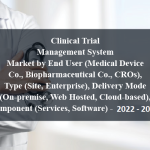OVERVIEW
The Medical Robotic Systems Market is currently valued at USD 16 billion in 2024 and will be growing at a CAGR of 16.1% over the forecast period to reach an estimated USD 33.8 billion in revenue in 2029. The medical robotic systems market has witnessed significant growth in recent years, driven by technological advancements, increasing demand for minimally invasive surgeries, and a growing aging population. These robotic systems offer precise control, enhanced visualization, and improved dexterity, thereby enabling surgeons to perform complex procedures with greater accuracy and efficiency. Key applications of medical robotics include surgical assistance, rehabilitation, and telepresence. Additionally, the integration of artificial intelligence (AI) and machine learning algorithms further enhances the capabilities of these systems, allowing for real-time data analysis and decision-making support during surgical procedures. As the healthcare industry continues to prioritize patient outcomes and cost-effectiveness, the adoption of medical robotic systems is expected to continue expanding, particularly in developed regions where there is a greater availability of resources and infrastructure to support their implementation. However, challenges such as high initial costs, regulatory hurdles, and concerns regarding patient safety and data security remain significant barriers to widespread adoption. Nonetheless, with ongoing research and development efforts aimed at addressing these challenges and improving the accessibility and affordability of medical robotic systems, the market is poised for sustained growth in the foreseeable future.
The medical robotic systems market is growing due to technological advancements, rising demand for minimally invasive surgical procedures, and the integration of artificial intelligence and machine learning algorithms. Advancements in imaging, sensors, and robotics have enabled surgeons to perform complex procedures with greater precision and efficiency. The aging population is increasing the prevalence of chronic diseases, making medical robotics a solution for addressing these challenges. AI and machine learning algorithms enhance the capabilities of medical robotic systems by providing real-time data analysis, predictive modeling, and decision-making support during surgical procedures. This improves patient outcomes and surgical efficiency. The emphasis on cost containment and value-based care in the healthcare industry is driving the adoption of medical robotic systems. While initial investments may be high, long-term cost savings can be achieved by reducing hospital stays, minimizing complications, and optimizing resource utilization. These market drivers are expected to continue driving the growth of the medical robotic systems market as healthcare providers seek innovative solutions to improve patient care, enhance surgical outcomes, and optimize healthcare delivery.
Market Dynamics
Drivers:
The medical robotic systems market is growing due to technological advancements, rising demand for minimally invasive surgical procedures, and the integration of artificial intelligence and machine learning algorithms. Advancements in imaging, sensors, and robotics have enabled surgeons to perform complex procedures with greater precision and efficiency. The aging population is increasing the prevalence of chronic diseases, making medical robotics a solution for addressing these challenges. AI and machine learning algorithms enhance the capabilities of medical robotic systems by providing real-time data analysis, predictive modeling, and decision-making support during surgical procedures. This improves patient outcomes and surgical efficiency. The emphasis on cost containment and value-based care in the healthcare industry is driving the adoption of medical robotic systems. While initial investments may be high, long-term cost savings can be achieved by reducing hospital stays, minimizing complications, and optimizing resource utilization.These market drivers are expected to continue driving the growth of the medical robotic systems market as healthcare providers seek innovative solutions to improve patient care, enhance surgical outcomes, and optimize healthcare delivery.
Key Offerings:
In the dynamic landscape of medical robotic systems, key offerings encompass a spectrum of advanced technologies and services tailored to meet the evolving needs of healthcare providers and patients. These offerings include state-of-the-art robotic platforms equipped with cutting-edge features such as advanced imaging capabilities, precise instrumentation, and intuitive user interfaces, enabling surgeons to perform complex procedures with enhanced accuracy and efficiency. Additionally, integrated software solutions leveraging artificial intelligence and machine learning algorithms provide real-time data analysis, predictive modeling, and decision-making support, facilitating personalized treatment planning and optimizing surgical outcomes. Complementary services such as training and support packages ensure seamless integration and ongoing proficiency among clinical teams, fostering a culture of continuous improvement and innovation. With a focus on enhancing patient care, improving surgical outcomes, and driving operational efficiency, these key offerings represent the forefront of medical robotics, shaping the future of healthcare delivery worldwide.
Restraints :
Medical robotic systems market development is expected, but there are a number of obstacles preventing it from reaching its full potential. Many healthcare facilities continue to face substantial obstacles due to the high initial expenses involved in the acquisition, installation, and maintenance of robotic platforms, especially in settings where resources are limited. Furthermore, manufacturers have difficulties due to complex regulatory frameworks and rigorous approval procedures for medical devices, which postpones the introduction of new products and market penetration. Healthcare providers’ reluctance to embrace medical robotics is partly due to worries about patient safety, data security, and liability concerns. Furthermore, a barrier to the broad adoption and use of these technologies is the lack of qualified experts who are experienced in robotic surgery techniques. The scalability and interoperability of medical robotics solutions are further limited by the absence of interoperability standards and integration capabilities between various robotic systems and the current healthcare infrastructure, which makes it difficult to integrate workflows and share data. In order to overcome these obstacles, industry participants, legislators, and regulatory agencies must work together to advance affordability, foster innovation, and handle more general issues related to the use of medical robotic systems in healthcare delivery.
Regional Information:
Regional variations play a significant role in shaping the landscape of the medical robotic systems market, with differences in healthcare infrastructure, regulatory environments, and reimbursement policies influencing adoption rates and market dynamics. Developed regions such as North America and Europe lead in terms of market share, driven by a robust healthcare ecosystem, higher healthcare expenditure, and early adoption of advanced technologies. The presence of established market players, strong research and development capabilities, and favorable reimbursement policies further contribute to market growth in these regions. In contrast, emerging economies in Asia-Pacific and Latin America are witnessing accelerated growth due to increasing investments in healthcare infrastructure, rising healthcare expenditure, and growing awareness among healthcare providers and patients about the benefits of medical robotics. However, challenges such as limited access to capital, regulatory hurdles, and infrastructure gaps pose barriers to market penetration in these regions. Nonetheless, efforts to improve healthcare access, enhance regulatory frameworks, and promote technological innovation are expected to drive sustained growth in the medical robotic systems market across diverse regions worldwide.
Recent Developments:
• In April 2023, Intuitive Surgical’s da Vinci SP system received US FD for a simple prostatectomy.
• In November 2022, an Indian startup SS Innovations launched SSI Mantra for soft tissue surgeries.
Key Players:
Frequently Asked Questions
1) What is the projected market value of the Medical Robotic Systems Market ?
– The Medical Robotic Systems Market is expected to reach an estimated value of USD 33.8 billion in revenue by 2029.
2) What is the estimated CAGR of the Medical Robotic Systems Market over the 2024 to 2029 forecast period?
– The CAGR is estimated to be 16.1% for the Medical Robotic Systems Market over the 2024 to 2029.
3) Who are the key players in the Medical Robotic Systems Market ?
– Intuitive Surgical, Inc., Stryker Corporation, Medtronic plc, Zimmer Biomet Holdings, Inc., Smith & Nephew plc, TransEnterix Surgical, Inc., Mazor Robotics Ltd. (acquired by Medtronic), Renishaw plc, Verb Surgical (a joint venture between Verily, an Alphabet company, and Johnson & Johnson), Accuray Incorporated.
4) What are the drivers for the Medical Robotic Systems Market ?
– The Medical Robotic Systems Market is driven by technological advances, enabling high-resolution examination of individual cells. Increasing demand for personalized medicine, applications in cancer research, and collaborations across research institutions contribute to the market’s growth. The focus on precise cellular insights propels innovation, expanding the market’s significance in life sciences.
2) What are the restraints and challenges in the Medical Robotic Systems Market ?
– The medical robotic systems market faces challenges like high initial costs, regulatory complexities, patient safety concerns, shortage of skilled professionals, and lack of interoperability standards. Collaborative efforts are needed to promote innovation and affordability.
3) What are the key applications and offerings of the Medical Robotic Systems Market ?
– Medical robotic systems offer advanced technologies, services, and software solutions to enhance patient care, optimize surgical outcomes, and drive operational efficiency, fostering a culture of continuous improvement and innovation in healthcare delivery.
4) Which region is expected to drive the market for the forecast period?
– North America is expected to have the highest market growth from 2024 to 2029
Why Choose Us?
Insights into Market Trends: Global Market Studies reports provide valuable insights into market trends, including market size, segmentation, growth drivers, and market dynamics. This information helps clients make strategic decisions, such as product development, market positioning, and marketing strategies.
Competitor Analysis: Our reports provide detailed information about competitors, including their market share, product offerings, pricing, and competitive strategies. This data can be used to inform competitive strategies and to identify opportunities for growth and expansion.
Industry Forecasts: Our reports provide industry forecasts, which will inform your business strategies, such as investment decisions, production planning, and workforce planning. These forecasts can help you to prepare for future trends and to take advantage of growth opportunities.
Access to Industry Experts: Our solutions include contributions from industry experts, including analysts, consultants, and subject matter experts. This access to expert insights can be valuable for you to understand the market.
Time and Cost Savings: Our team at Global Market Studies can save you time and reduce the cost of conducting market research by providing comprehensive and up-to-date information in a single report, avoiding the need for additional market research efforts.












